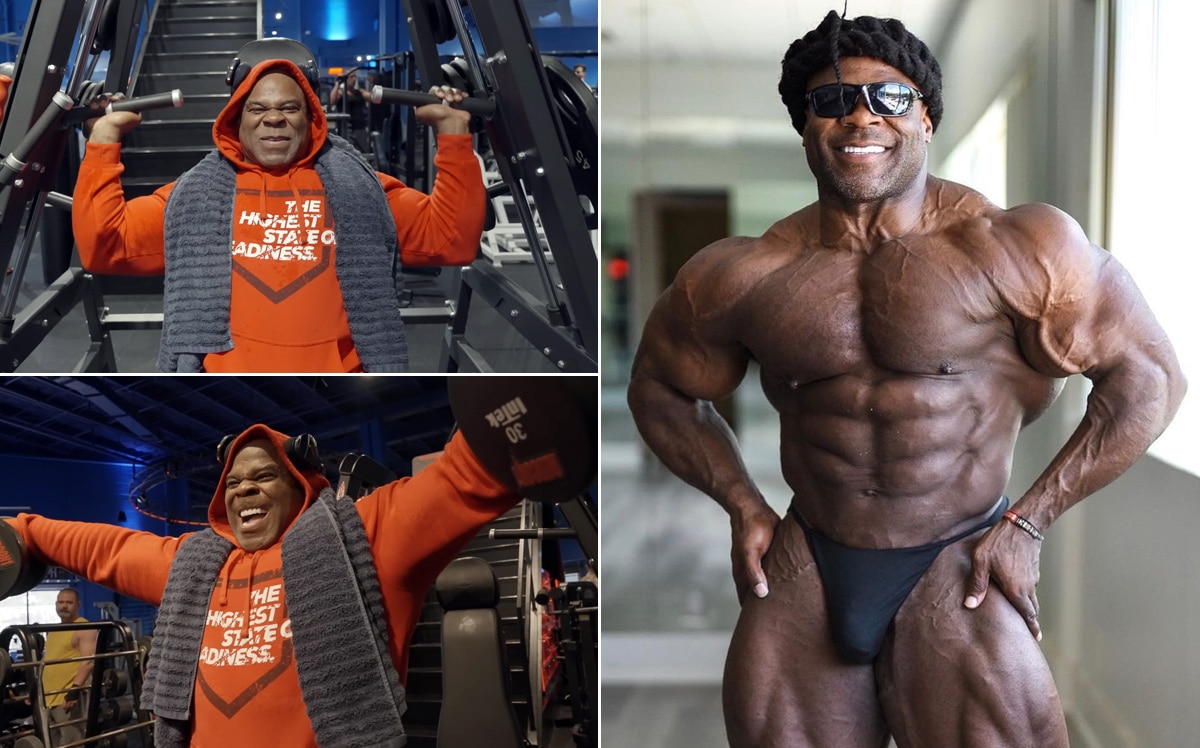
Although Bodybuilder Kai Greene‘s return to the stage is not warranted at the moment, the veteran bodybuilder continues to train hard and improve his massive physique further.
The 47-year-old bodybuilder competed for nearly two decades in the IFBB Pro League’s Men’s Open division. Greene won several Pro shows during his career, including three Arnold Classic wins. He is a six-time Olympia participant and finished in the top five in all but one of those instances.
A perfect antagonist in 7-time Mr. Olympia Phil Heath‘s story, Greene gave the champ everything he could handle. However, he never won the prestigious title despite coming close to achieving it on multiple occasions. “The Predator” is among the greatest bodybuilders who never won the Mr. Olympia title.
The 2016 Arnold Classic Brazil was Greene’s last competitive appearance, and he walked away with a victory at the show. However, he has not retired from the sport officially. In a recent interview, Greene refused to close the door on a potential comeback.
The 47-year-old has a significant presence on the internet and routinely shares bodybuilding content on social media platforms. Recently, he tackled an intense shoulder workout in the gym with Pro Wrestler and AEW star Brian Cage.
The duo trained with furious intensity but in Greene’s usual playful manner. So let’s see which exercises they included in the training session.
Kai Greene’s back workout in the Elevation gym
Superset: Reverse Pec Deck Flye and Machine Lateral Raise
Greene and Cage kicked off the workout by targeting the medial and posterior deltoid muscles with this superset. Supersets can be very useful to increase the aerobic intensity of the workout and reduce the workout time.
The duo performed all the sets within this superset to warm up the deltoid muscles and took to a front delt exercise next.
Panatta Smith Machine Shoulder Press
The overhead press primarily targets the anterior deltoid muscles but also activates the pectoral and upper back muscles.
The training partners cranked out heavy sets of this compound movement and returned to working the lateral delts again.
Dumbbell Lateral Raise
While the anterior and posterior deltoid muscles get sufficient work during push and pull movements, the lateral deltoids have to be activated with lateral movements. Therefore, it is essential to include those in the shoulder training routine for complete growth. The training partners next took to the dumbbell lateral raises, pushed through some heavy sets of the movement, and took to another anterior deltoid movement.
Machine Overhead Press
Another variation of overhead press followed the lateral raises. Greene and Cage started with a few sets and then interacted with each other about injury prevention.
“With a little bit more experience and mileage on my joints, I kind of have to become a little more conscious of how I do certain things. Joint health is something I think is a continuing learning process to help continue the longevity possibly,” Greene said.
The duo agreed that facing an injury can really change a person’s outlook toward longevity, and Green said:
“Everybody’s invincible until they’re not! Everybody’s a tough guy until this.”
A few intense sets later, the Titans jumped into the next movement.
Bent-Over Dumbbell Lateral Raise
Although posterior deltoid muscles get stimulated during many back exercises, activating them with other shoulder movements is difficult. Therefore it is essential to incorporate rear delt-specific movements in the shoulder training routine.
Greene and Cage annihilated a few sets of bent-over dumbbell lateral raises without compromising the technique and took to the next movement.
Neutral-Grip Dumbbell Front Raise
Dumbbell front raises almost exclusively target the anterior deltoid muscles, but they also activate the clavicular head of the pectoralis major muscles to an extent. Following some sets of the movement using a neutral grip, Greene moved on to another rear delt exercise.
Machine Rear Delt Raise
Free weight as well as machine variations of rear delt raises load all the muscles that make up the shoulder girdle. Although posterior deltoids are the primary target muscles of this movement, it also helps improve the posture by working several upper body muscles.
The training partners performed a few sets on a plate-loaded machine and took to the next exercise.
Cable Front Raise
Anterior deltoid muscles are utilized in heavy compound movements like the bench press. Developing them through various anterior deltoid movements can translate to heavier compound movements.
Cable machines keep the muscles under tension throughout the range of motion and hence help bring about hypertrophy and strength gains more effectively.
Greene and Cage powered through solid sets of cable front raises to work the anterior deltoids and switched to the day’s final exercise.
Cable Face Pull
This cable machine exercise helps with overall training and development as it targets the upper posterior chain muscles.
The duo cranked out a few sets of the cable face pulls to work the lateral delts, posterior deltoid, infraspinatus, trapezius, teres minor, and the brachialis and the brachioradialis muscles in the arm.
This movement served as the finisher of Kai Greene’s shoulder training session as he wrapped up the movement after some good sets.
The back workout followed this exercise sequence:
Greene has a wealth of bodybuilding knowledge and decades of training under his belt. It is always an enriching and motivating experience to watch him train.
Looking at his impressive physique after all those years away from competition, one can’t help but hope to see him compete again soon.
You can watch the full workout video below, courtesy of Kai Greene’s YouTube channel:
